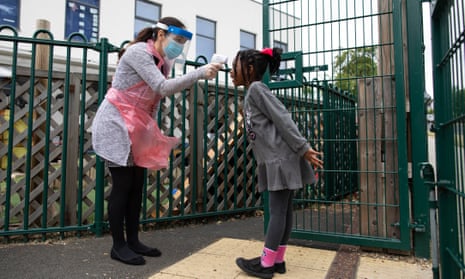Into the debate about the full reopening schools across the UK comes some good news from Public Health England (PHE), confirming that children and adolescents are at minimal risk of Covid-19. Children under 16 accounted for just over 1% of all cases of coronavirus during the “first wave” of illness in England, and even among those with respiratory symptoms, only 4% tested positive for the virus, compared with between 19% and 35% in adults.
This makes one thing clear: reopening schools after the summer break does not represent a significant Covid-19 risk to children and teenagers themselves. What is also clear is that, as the recent difficulties around A-level results have highlighted, the near complete shutdown of school in March, during the early stages of the pandemic, meant that children and young people have been disproportionately affected by the lockdown relative to their risk of disease.
However, the more challenging question – and one that has been causing a headache for the health secretary, Matt Hancock, and the government – is whether the full reopening of schools is a risk to the UK’s control of the pandemic.
Here the science is less certain, but emerging evidence does suggest the risk is manageable, and of much less harm than keeping schools closed. Findings from the recent PHE study are an encouraging start – during the pandemic first wave children with flu-like symptoms (who of course should not be attending school anyway) are much less likely to be shedding the Covid-19 virus than adults. Also, even if young people infect their classmates, their classmates are unlikely to become unwell.
But the greater concern is whether children and teenagers with no symptoms could be shedding it, unknowingly creating a pool of virus circulation responsible for infecting adult staff members and spreading it into new households. It is certainly true that many (probably most) childhood infections with the Covid-19 virus cause no symptoms. In an ongoing antibody study we have shown that up until the end of July, approximately one in 25 healthy 0- to 19-year-olds had experienced a Covid-19 virus infection, but under a third of these had any respiratory or flu-like symptoms. So, yes, there is a chance that students will attend school while being unknowingly infected with the virus.
Just how likely this is has been the study of speculation this week based on unpublished data from a school-based, PHE swabbing study, with reports suggesting that very few children attending reopened primary schools at the end of the last academic year had detectable virus. Given the very limited reopening of secondary schools before the summer holidays the situation in teenagers is less certain. However reports from the Office for National Statistics have consistently shown that, even with schools closed, approximately one in 300 children and teenagers with no symptoms had the Covid-19 virus detectable on nasal swabs from April to July, similar to rates in those aged 50 and above.
But having detectable virus is not the same as being infective to others. Here the experience of Sweden is useful: it has kept schools open for under 16-year-olds during the pandemic, and found that infection rates in teachers were no higher, and were often lower, than other occupational groups. Clearly many other variables could be at play here (teachers may, for example, be younger or healthier than the other occupational groups), but this does provide some reassurance that students are not efficient spreaders of coronavirus. The need for continuing surveillance and vigilance is highlighted by recent outbreaks such as the one at an overnight youth camp during June in the US state of Georgia (in which at least 260 of 597 attendees tested positive for Covid-19), however it is to be hoped that risk management within schools will avoid the “daily vigorous singing and cheering” that may well have contributed to this.
As with many aspects of the pandemic, there is no perfect answer, but the opening of schools must be a priority for the coming academic year. Moving into autumn, as the effects of other lockdown-easing measures are felt, it is inevitable that the plan will coincide with an increase in Covid-19 cases. Equally inevitably this will be accompanied by calls to revert to a school shutdown. Fortunately the evidence base on which to make any such decisions is building by the day, and it is to be hoped that any further restrictions would only be used as a last resort, and only if there is clear evidence that they are of benefit.
Children and teenagers have already had to sacrifice a significant amount of their education for an illness they rarely suffer from; we now all need to remember our obligation to make their continued wellbeing and development our priority.
